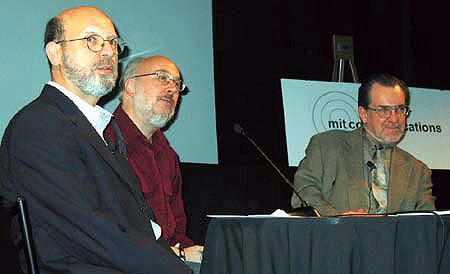| TV's
New Economics |
||
|
Abstract Speakers Jorge Schement is perhaps the leading academic scholar of the statistical matrices of consumption and information exchange. He is distinguished professor and co-director of the Institute for Information Policy, Penn State University. A webcast
of TV's New Economics is now available. [This is an edited summary, not a complete transcript] DAVID POLTRACK presented a CBS study ("Television Enters the Digital Era, The Era of the Franchise Program"), saying the shift from analog to digital television is a technological shift and, as such, could be assumed to be content-neutral. This is not the case, he explained, as digital television has changed television from a linear to a non-linear viewing experience. I'll be looking at four specific technologies and how they're changing the consumption of television: digital video recorders (DVRs), video on demand (VOD), portable-viewing technologies such as the video iPod, and the Internet. Digital video recorders reached the market in 1999, and were predicted to revolutionize television. It was predicted that 28 million DVR units would have been sold as of 2005, and 45 million would have been sold by 2006. I was skeptical that this new technology would reach 50% of the market in 10 years, as the VCR did, and so far I've been right. By 2003, 3% of viewers had a DVR; by 2004, the number was 5%, and by 2006, 8%. It would be an understatement to say that those numbers are below what was anticipated.
The next question is how much DVR owners are using the device. In our research, respondents said they did 40% of their viewing in playback mode. Electronic testing put the figure at 30%. It is important to remember, however, that this data only applied to viewing of TiVo equipped sets, and doesn't include other sets within the home. The data measures the number of sets tuning in, not the number of people watching. In an Arbitron study, 9% of the Houston sample lived in DVR-equipped homes. In those homes, 10% of viewing was done in playback mode during the April-May period, dropping to 7% in the summer. In a DVR survey conducted by CBS, persons in non-DVR households watched 5.1 hours of TV a day, while DVR households watched 5.7 hours: a 12% increase for DVR households. Even more interesting were the shows watched: broadcast television made up the clear majority, making up 71% of the television viewed live, 80% of the television viewed in playback mode, and 73% of the recorded television. For comparison, note that ordinarily, only 47% of viewers are watching broadcast television during prime-time. Of the shows being watched in playback mode, prime-time programming dominates. The top 10 shows on playback make up 30% of the total viewing, while the top 20 represent 47% of the total viewing. Incorporating both live and playback viewing, the top 10 shows make up 25% of all prime-time viewing activity, and the top 20 make up 39%. These figures are far higher than those for non-DVR households, in which the top 10 and 20 programs make up only 9% and 15% of total prime-time viewing, respectively. So what are the most frequently played back programs? The numbers are remarkably close to the top-rated programs for non-DVR households, in both self-reported and electronically monitored viewing. One noted exception is The O.C., which did much better in DVR households, probably due to the fact that it's scheduled against the extremely popular Survivor. The data seems to indicate that franchise programs benefit from DVRs. The monthly audience for CSI is 60 million viewers, while the weekly audience is only 25.6 million. While most CSI viewers only see about half of the episodes aired, it stands to reason that they might record episodes they expected to miss for playback viewing. In our DVR research, 13% watched the show live, which is consistent with the 13.9%. However, another 7% watched in playback mode, and another 15% recorded the program for later viewing. Added together, DVR households watch CSI nearly twice as often as non-DVR households. Nielsen has just recently added DVR data to its measurements. 8.5% of households now have DVRs, and the DVR adds 5% to the audience of the top prime-time shows.
These are the top-rated shows among DVR households. You can see that they match the non-DVR ratings quite closely.
These are ranked by the percent contribution of DVR playback. As you can see, some lower-rated programs are pushed into prominence by higher-than-average DVR playbacks, especially those that compete with higher-rated programs. Some programs do approximately twice as well in DVR households than in non-DVR households. Along with the other data, this seems to imply that DVRs are not hurting broadcast television, but increasing viewership. It is my opinion that DVR is a transition technology, one that will eventually be replaced by VOD, or video on demand, services. Our VOD study was made up of 18 focus groups, consisting of adults aged 25-54 who were either the male or female head of their households. No dependent adults were included, since they would not be able to discuss future purchase intentions. In total, there were 189 respondents in 32 states. This research was intended to study the leading edge of the entertainment technology market, so we focused on adults with cable or satellite television. These respondents were much more likely than the general population to have broadband Internet, for example. We conducted two VOD experiments. The first asked respondents to select programs they would be interested in purchasing, the second simulated a night of TV viewing. In the first experiment, respondents were offered programs for $1 without commercials and $.50 with commercials. 95% selected at least one show, and on average respondents selected 7.5 shows. There was an even split between those who opted for commercials and those who opted to remove them. The program list incorporated the top broadcast shows and the top original cable shows. These findings closely paralleled the Nielsen age 25-54 rankings, with the top 10 making up 34% of the shows selected. The next ten top programs showed more variance. Nip/Tuck was the only basic cable entry. Together, the top 20 made up 57% of all choices. Clearly, VOD demand is centered on a small number of shows. Interest is not isolated to prime-time, however, and daytime VOD demand seems to be centered on talk shows, specifically Oprah. Shows that ran more than once a week were priced at $.50 per day, and $1.00 per week. In late night, The Late Show with David Letterman and Saturday Night Live led the pack. We also included feature films recently available at Blockbuster, for $5 for one-day access or $7 for a week's access. The selections were consistent with DVD rentals. While the numbers are indeed impressive, they are far below the number of people willing to pay for television VOD, although it must be noted that the prices are higher for movies. In the second experiment, viewers were asked to plan a night of television viewing, choosing from a selection of VOD options and the usual selection of prime-time network and cable programming. We rotated the study so each night was represented. Our 211 respondents chose to purchase 148 programs, or 0.7 per respondent. Hopefully this demonstrates VOD's potential to create a secondary revenue stream for major program brands; the DVR, while increasing overall television viewing, actually detracts from potential VOD revenue. Consumers with access to both DVR and VOD technologies are split down the middle on which they prefer, but must be noted that those who prefer DVR do so for reasons of convenience and variety, areas in which VOD will only improve in the near future. One of the areas in which VOD technology is expanding is at the level of portable video devices. The most prominent portable video device at the moment is the Video iPod. While mp3 players such as the iPod have become nearly ubiquitous, only a small number of their owners are interested in buying a video iPod. However, 35% of iPod owners expressed interest in the ability to purchase episodes of their favorite shows through iTunes. Similarly, 37% of VOD users were interested in this service. In light of this data, it seems obvious why ABC is so eager to make episodes of Lost and Desperate Housewives available on iTunes. While those without iPods are not clamoring to buy video iPods, the possibility of video content through iTunes does make them more likely to consider it. Another new technology is the full-motion video equipped cell phone. 11% of our study's high-tech panelists already own a video cell phone, but aside from these early adopters, few seemed interested in the new technology. In our study, respondents prefer the Video iPod to the video cell phone by a margin of 55% to 45%. More recent research places the Sony PSP above the video cell phone but below the Video iPod in consumer interest, but all pale in comparison to direct viewing on the PC. It is clear that non-linear television is the future, and that it will benefit franchise programs above others. This newfound dominance of the franchise program will lead to even fiercer competition, and for the most part, franchise programs are found on broadcast networks. More and more, this competition includes the Internet, which is both a competitor and an opportunity to expand the reach of franchise brands. Let me give you some examples of how we're expanding our programming into the Internet. First, we're putting TV content on the Internet, such as a short episode continuation of an episode of CSI: Miami, which received one million streams shortly after becoming available, or complete programs such as Everybody Hates Chris, which screened the pilot on Google video for a short time, receiving 120,000 streams. It also includes live Internet talk shows for reality shows. It also includes podcasts, blogs, and interactive applications. Perhaps the most exciting is the NCAA Final Four, which we will be running live on the Internet. We believe this will break the record for simultaneous users of streamed content, currently held by Live 8, with 188,000 simultaneous streams. To wrap up, the era of digital television will be the era of the franchise program. That is why we formed CBS Vision to research this new sector. We welcome the opportunity presented by this new era.
By this 1920s, this description already defines a household in terms of information technologies. However, new demographics are arising. New information communication technologies (ICTs) arrive in waves, displacing but not replacing previous technologies. As the home has become fuller with information technologies, we have become not members of a household, but individuals in a household who participate as individuals. The average size of households is declining, and has been declining since the first census was taken in 1790. We now live in houses with enough space for fewer than three people. Similarly, the percentage of households with children has continued to drop, from 33% in 1998 to an estimated 28% by 2010. Purchasing behaviors are expected to change as a result. Thirdly, single-person households have also been going up quite dramatically, with the biggest jump coming right after the 1960s. The traditional household we talk about in political circles represents only 7% of Americans households.
If there is an overall picture, it is not of convergence, but of fragmentation. The realities of living at home alone are different from living at home with children. Projections of the ethnic population of New York and Los Angeles show the cities' ethnic makeup changing dramatically between 1992 and 2020, with Asians and Hispanics becoming much larger portions of the population, and whites shrinking in population percentage. In New York, whites have already lost majority status, and it is estimated that this trend will spread to the entire New York metropolitan area within 5 years, and the entire state in 10 years. In Los Angeles, whites (or Anglos, as they're called there) have similarly lost majority status. This is expected to transform the economy, popular culture, the economy, and political perspectives. History still counts, however. The distribution of Blacks in the United States is still focused on areas of settlement that followed wars.
Similarly, Hispanics are affected by wars, but also by a $99 tourist fare to Puerto Rico instituted in the 1950s that also served as a one-way ticket to New York City, as well as the 1959 revolution in Cuba.
Notice that the borders of the historically Black areas run right up to the edge of the historically Hispanic areas. East of that border, ranching doesn't work, and west of that border, cotton can't be grown without irrigation. Even today, population is still largely determined by this history. Three other states are expected to make similar transitions as New York in the next several years: Iowa, Michigan and Kentucky. Let's now think about technology in general, apart from demographics. Americans have been eagerly purchasing information communication technologies for a century. The first opportunity to buy an ICT was the telephone, offered on the day the Battle of Little Big Horn was fought. The success of television, though, might not be as technology-driven as it might seem. Prior to the 1980s, the home had a fairly simple technological environment, whereas by 1995, the home had become a node on a network. Prior to 1950, half of all homes didn't have telephone service, and half didn't have a car. Most had radios, but only one. Now, let's look at some adoption rates of recent information technologies.
We have several patterns of diffusion here, some catching on quite quickly, and others growing quite slowly. There are two markets at work here, markets of goods (television, radio, VCR) and markets of rents (telephone, cable). The markets of rents seem to catch on slower. Even during the depression, people still bought radios hand over fist, often shutting off phone service to pay for it. While this might seem backwards, it's worth noting that even now in poor areas, telephones are easily sacrificed to afford cable, since the people most likely to call a poor person on the telephone are bill collectors, police, truant officers, etc. In addition, radio and cable are more likely to help keep kids indoors, which is important for their safety in some areas. Other people's rational choices might not be your own. In 1954, my mother bought a television, and we rearranged the furniture to accommodate it. My mother, never to be outdone, made sure that the TV was displayed in such a way that it could be seen through the window, greatly increasing our social standing in the neighborhood. Newspaper circulation peaked in 1950 with the advent of television and has never recovered, and isn't expected to recover in its traditional form. Similarly, admissions to movies began to fall earlier, while the purchases of books and maps remained constant. Television did not kill the movies, however. Rather, the baby boom increased the economic strain on an entire generation, making it more difficult for them to get out of the house. The lesson here is that we tend to look for technological explanations where social explanations might be more useful. That books and maps remained constant demonstrates that some media remain fairly constant. In the 1980s, homes were inundated with new media, such as answering machines, faxes, videogames, cable and VCRs, marking a turning point in the technology environment of the home. By 1995, the American home looked very different than it had before. I'm sure you're all well aware that videogames have become an enormous industry, but few people realize that 43% of videogamers are women, and if you take women over 18 as a category, they represent a bigger market than boys aged 6-17. It might be that 6-17-year-old boys helped cement the industry, but they're no longer the majority. The average gamer's age is now 37, and 25% of gamers are over 40. Personal consumption expenditures on information technology don't change much over time. From 1930 to 2000, the percentage moved from 4.5% to 5%. The technologies get cheaper over time, and people tend to purchase multiples when they get cheap enough. Internet access is, for the moment, holding steady at about 60%. One area we've been looking at is what happens to rural communities in the wake of information technology advances. Rural areas that have Internet tend to have earlier technologies with slower connections, and their hope for advancement is to attract businesses. Dave might be interested in this, a list of the top prime-time television shows by ethnicity.
Note that Monday Night Football is the only show that rates highly among all three. To summarize, this is the home that we have become, as a result of our changes in information technology. This quote is taken from interviews that we conducted in New Jersey a few years ago, from a woman named Jill Reston: “That seems to be the best time that we have our family discussions—when we can get away from the home and go out to a restaurant where there's nothing to distract the kids. There's no video games they can run off to. There's no phone ringing. There's no TV on. It seems like a lot of the meals around this table—even though we're still pretty good at coming together as a family around the table—but usually there will be something that we have to get done. There's a game coming on or a TV show coming on or something. The phone will ring during the dinner. So, we look forward to the times that we can go and take the kids and go out to some place and then really have good family discussions.” Americans today have to purchase intimacy, because they've made their homes into multiplex theaters. It's not a judgment, it's just what Americans want. If I were to ask myself what this means, I'd fall back on a quote from Henry David Thoreau: “I had three chairs in my house; one for solitude, two for friendship, three for society.” This idea of society as a group of individuals, atomistic, is what we have today. The home we have built for that society is as Le Corbusier described: “A house is a machine for living in.” Discussion
POLTRACK: Reality shows have been the biggest change. Sitcoms have been unpopular before, and they've come back. I think it has to do with changing conceptions of home. The most successful sitcoms are the ones people relate to, whereas dramas are mostly concerned with varying degrees of fantasy right now. One very popular genre not yet seen in the U.S. is the telenovela. The chart shown earlier didn't include Univision. Non-linear television seems to benefit dramas. JENKINS: Jorge showed some statistics about changing ethnic makeups, and suggested that might affect the popular culture. Most of the shows watched by Blacks and Hispanics are on second-tier networks, not the big three. How do you feel the changes will happen? SCHEMENT: Telenovelas do well internationally, not just on Univision. One of the outcomes of changing demographics is an increase in what were called in my youth “mixed marriages.” I think that's fairly unexplored territory. POLTRACK: Our generation segregated its shows. The shows had acceptance of minorities, but didn't have social interaction between minorities and whites. Television is finally starting to get this right, and I think Grey's Anatomy is a great example of that. NINA HUNTEMANN: My understanding of the threat represented by DVR had to do with advertisements: that people could watch whatever they wanted and skip the ads entirely, depriving the station of money. How do you address that part of the issue? POLTRACK: When polled, 70% of people say they use DVR to fast-forward through commercials; electronic data puts the figure at 50%. People tend to skip ads selectively; they tend to stop early to avoid fast-forwarding through the show, and they stop for ads they like. Finally, 21% of people who fast-forward through ads still remember what they are promoting, which is more than people who don't try to skip them. CURTIS HENDERSON: In terms of the data presented today, is community media (such as public access TV) a factor in television viewing? Is that something that was explored? POLTRACK: This is an issue of television vs. Internet. The Internet is more personal. Blogs and podcasts could soon evolve into video, allowing a greater level of community involvement than television ever could. Community television will always be a part of television, and cable has really allowed it to flourish, but the experience of community television might be transformed through the Internet. THOMAS RIKERT: With the Internet, people will soon be able to effectively make their own TV stations. Will this cause fragmentation in terms of distribution, or consolidation in a few major networks like Google or Yahoo? POLTRACK: Overall, I think we're going to see many forms of distribution, which is why I prefer to be in the content business right now. SCHEMENT: Commercial distributors on the Internet have been very clever about funneling user attention, but that doesn't stop independent distribution. KEVIN RIGGLE: You mentioned earlier that the top 10 shows on DVR were pretty much the same as those for non-DVR viewers. Has CBS restructured its programming to take advantage of the long-tail effect, the idea that niche markets can be more profitable than larger ones over a long period of time? POLTRACK: Viacom is very active in that area. CBS has also done some research, but not as much. The key thing we're working on is pull-through marketing, generating demand for extra content through broadcast television. QUESTION: I'd like to make a distinction between fast-fowarding through commercials and using a 15 or 30-second skip. Will you lobby manufacturers not to produce DVRs with the skip function? POLTRACK: We've essentially already done that. Comcast and DirecTV, the top two distributors of DVR, have been very friendly to advertisers in that area. Giving viewers an option to pay extra in exchange for no ads produces interesting results. In principle, only a third said they'd watch the ads, but when they had ordered 7 or 8 shows, about half cared enough about avoiding ads that they were willing to pay for it, the rest chose to watch them. In general, about a third of people are passionate about avoiding ads, and the rest are ok with it. SCHEMENT: Was there any particular age breakdown on that data? POLTRACK: Young people are more media-savvy, and are more likely to skip ads in general, but they do like ads targeted at them, and most ads are, in fact, targeted at young people. ALANA LENHART: You mentioned earlier one of your VOD studies in which you excluded data from young people living with their parents, since the parents ultimately make the buying decisions, but wouldn't you agree that children often drive the buying decisions of parents, even if they aren't using their own money? POLTRACK: There is, in fact, a large VOD market for children. Nickelodeon and MTV are active in that area. It's not an issue we're ignoring, but in that particular case, we were looking at prime time, which is considered by advertisers to be an adult area. LENHART: But the age group you looked at seemed to be one that might have children who watch prime-time television. POLTRACK: Yes, but the assumption is that they don't make the primary buying decision. We did do some research on teens that had some unusual results. We were testing consumer response to the video iPod, cell phones and the Sony PSP. Parents who had already bought the PSP for their children were alarmed to learn that it could play video or go on the Internet; they thought it was just a videogame console. LENHART: The age group you excluded is the group most likely to be knowledgeable of BitTorrent, or other services that allow them to get television content without commercials for free. If you're asking the parents what they'd pay for, and the parents don't know that they could get it for free, you might get skewed information. POLTRACK: Rights management is a big part of this. We're trying to head off the illegal market by getting a legal, reasonably priced product out there first. The music industry waited too long, and by the time they had legal downloads available, a culture of illegal filesharing had already taken root. JENKINS: There's been a lot of consternation in the last few years about the disappearance of the young male viewer. Jorge's explanation seems to be that games are drawing their attention, but to what extent is the Video iPod affecting things?
POLTRACK: One problem with the measurement system is that it doesn't measure out-of-home viewing, and young people often watch television outside of the home. The statistics are misleading; young males never actually lessened their television watching, it just appeared so due to changes in Nielsen measurements. SCHEMENT: Something similar can be said about videogames. While young males are a small part of the market, they play for longer periods than other groups who play more on average. In addition, gameplay is extremely social, even as the number of children in the average house shrinks. QUESTION: How successful has the video iPod been per your expectations, and what do you see for the future of the portable video device? POLTRACK: Apple says they've sold 1.8 million Video iPods and 12 million downloads. The Video iPod itself was generally thought to be too expensive, too heavy, and with a prohibitively small screen, but portable video is inevitable. High-definition television was too expensive for consumer demand, but that's starting to change, and the same thing will happen with portable video players. JENKINS: Jorge, which technologies do you see taking off in the near future? SCHEMENT: High-definition television is finally inexpensive enough that it's gaining widespread acceptance. Technology follows a pretty static pattern, but gear carried on the body, not left in the home, is the new frontier. POLTRACK: Historically, as people got more television sets, families stopped watching as groups. Now that people have HDTV and are building home theaters, there's a single dominant unit again, and families are gathering around the TV again. SCHEMENT: The one constant is that the home is always a place of negotiation, even when you live alone. QUESTION: How has the amount of time spent watching television changed with the introduction of new media? POLTRACK: It's going up. One trend involves the availability of other media, but those “competing” media tend to keep people at home, which tends to contribute to watching more TV. In addition, many young people have become skilled at multitasking, allowing them to consume multiple media at once. DAVID LIROFF: We seem to be entering an area where consumers have more control than producers. You've said that the research done with teenagers has produced unusual results, what will it be like in ten years? POLTRACK: I'm a bit worried about the sanity of the kids, growing up in this media environment. It's been suggested that hearing loss will become very common. Shared experience is always part of consumption, though, and TV is all about shared experience. The context might change, but the experience will remain much the same. SCHEMENT: For teens, multitasking with media enhances the experience, and that will affect the way they consume media. QUESTION: Ten years from now, what device will be the most disruptive to traditional media? What will become of CBS? SCHEMENT: I think CBS will be handling things, whatever comes up. POLTRACK: The Internet is the most disruptive addition, but it also presents a great opportunity. QUESTION: Part of the value of digital information is the ability to embed meta-data. Will content providers be taking advantage of this? POLTRACK: Yes, technology and content will come together. As content providers, we're more focused on that, but the CBS Corporation is always looking for technology to match it. SCHEMENT: My generation was taught to look for information, but I think this one will be taught how to sort through a superabundance of information. QUESTION: Professor Poltrack, you suggested that technology changes are content-neutral, and Professor Schement, you suggested that demographic changes are not content-neutral. I'm concerned about the news. What's the future for well-financed, highly produced global news that might or might not be a shared experience? POLTRACK: We are in the process of reshaping our news. We have news bureaus around the world, but under the old model, we had to throw away most of our news to make sure it could fit in 22 minutes. We threw away far more news than we could ever air. Now, the challenge is to find a way to use all of it. --compiled
by Peter Rauch
|
||


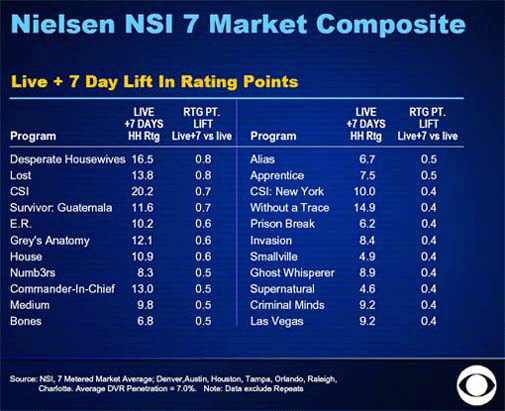
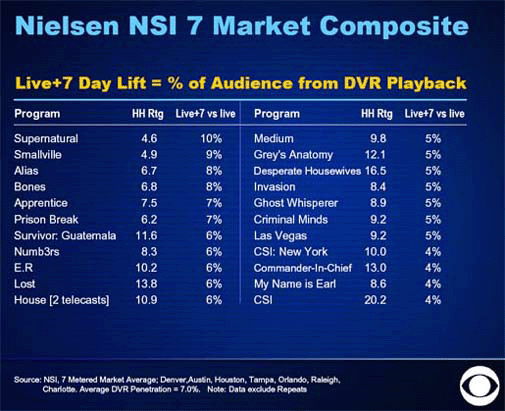
 JORGE
SCHEMENT gave a presentation (
JORGE
SCHEMENT gave a presentation (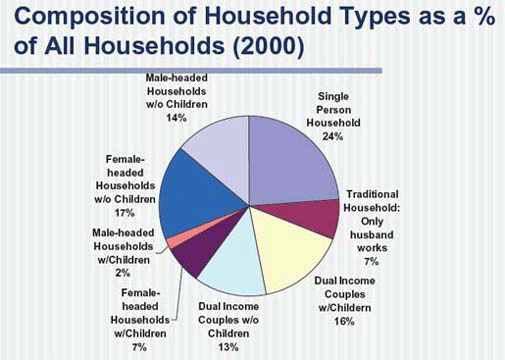
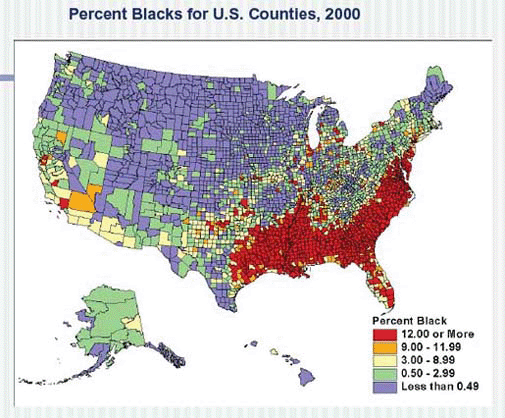
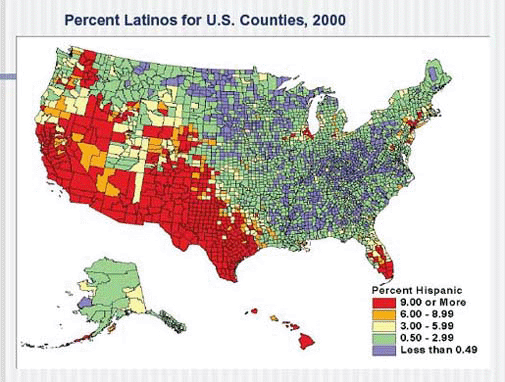
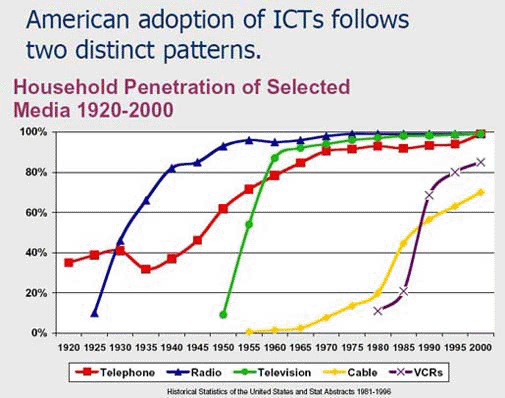
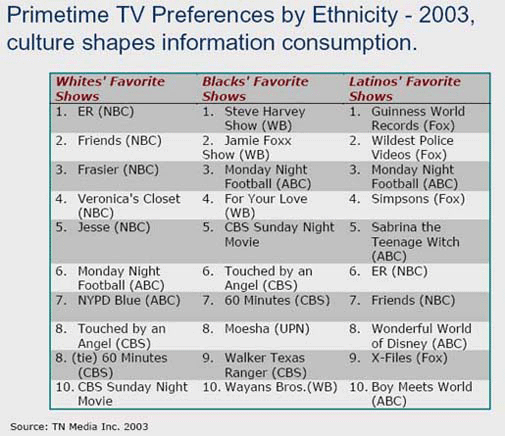
 HENRY
JENKINS: David, you made a convincing case for the
centrality of network programming on television, but I noticed
on the charts you showed that only one sitcom was in the top
20. All the successes seem to be dramas and reality shows.
HENRY
JENKINS: David, you made a convincing case for the
centrality of network programming on television, but I noticed
on the charts you showed that only one sitcom was in the top
20. All the successes seem to be dramas and reality shows.